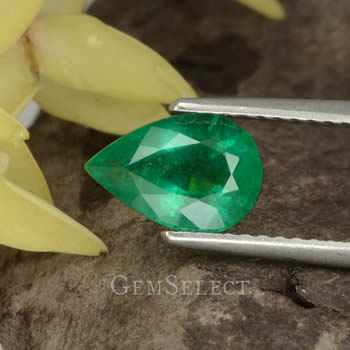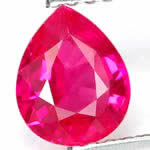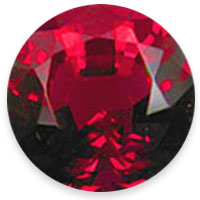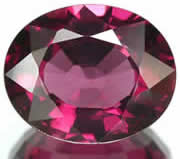|
Reviewed By Andreas Zabczyk
Country of Origin
Colombian Emerald
Like most reputable gem dealers, we always state the country of origin for our gemstones. If we have more specific information, such as the region of the country or even the specific mine, we include that as well. Buyers have come to expect this information. One school of thought would claim that this is unnecessary. A fine gemstone is always a fine gemstone, regardless of its provenance. The fact that a spinel is from Myanmar (Burma) doesn't necessarily make it a good stone; and if the spinel happens to be from Tanzania that doesn't mean it is of inferior quality. Indeed, there is superior and inferior material from every mining location. Or so the argument runs. 
Burmese Ruby
Gem types originating from specific regions undeniably fetch high prices in the market, highlighting the significant financial value attached to their country of origin. Furthermore, there is reason to think that this country bias is justified in many cases. Gemologists largely agree, for example, that few rubies have the color intensity and fluorescence of Burmese rubies; and this is a qualitative difference that can easily be seen and measured. 
Thai Ruby
It is true of course that Burmese rubies - especially those from Mogok - are famed for their unique qualities, not just because they come from Burma. In the mind of many buyers, the country of origin is of special interest. The ruby buyer wants to know if a particular gem is from Burma, Thailand or Madagascar. The emerald buyer wants to know if a specific stone is from Columbia, Brazil or Zimbabwe, and so on. Getting independent verification of a gemstone's country of origin is not easy. Only a few gemological labs provide country of origin reports, though there is growing demand in the market for them. As a result, an increasing number of labs would like to get into this business. The goal is to develop a set of scientific tools that enable the lab to 'fingerprint' a gemstone. This means that the lab first has to build a database of physical and chemical characteristics specific to each gem variety and location. It requires analysis of a large population of samples. This would be an ongoing project as new mines open and old ones go deeper, meaning that the chemical fingerprint for a region is changeable. 
Tanzanian Spinel
The task of fingerprinting gems can become more difficult when material from new locations enters the market. For example, some of the sapphire from Madagascar looks very similar to sapphire from Sri Lanka or Burma. A new supply means that there are limited samples to build a profile from, so it's more likely that a lab can be mistaken. It's not surprising that country of origin reports from a lab tend to use well-chosen phrases, such as, "based upon available gemological information, it is the opinion of the lab that the origin of this material would be classified as Burma (Myanmar)". The moral of the story, perhaps, is that buying fine gems still requires a good eye for superior gemstone characteristics. Buying on the basis of country of origin alone could be risky. This Page in Other Languages
|
| STAY IN TOUCH | NEWSLETTER |
| *You're signing up to receive GemSelect promotional email. |
Copyright © 2005-2024 GemSelect.com all rights reserved.
Reproduction (text or graphics) without the express written consent of GemSelect.com (SETT Company Ltd.) is strictly prohibited.
640